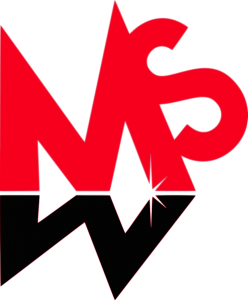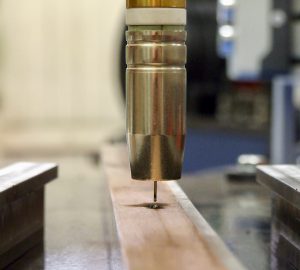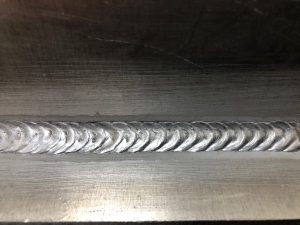How to MIG weld Aluminium
How to Mig weld Aluminium.
One question we regularly get asked at MS Welding, by new and old customers alike, is can you MIG weld aluminium? This is usually followed up by some comment about a video on youtube, or somebody’s mate said……
Well, if you didn’t know already, yes you can MIG weld aluminium, and with a little practice, the right gear, and some helpful tips you can achieve great results. You don’t need any special equipment as such, other than a MIG welder, 100% argon gas, a 3-meter torch, the correct roller for feeding aluminium, and a liner specially used for transporting the aluminium wire down your torch to the job.
At this point, I would like to say a good solid welding machine will produce great results. If you are thinking of trying to use the little craft MIG 130 from the back of your shed to get those beautiful results, you may be barking up the wrong tree. See, those hobbyist welding machines just don’t have the balls in them, the feed system might be ok for feeding some mild steel wire to tack a little repair job together, but I haven’t seen one yet that has the refinements within the feed system to feed alu wire, with the smallest amount of pressure required. Also, when welding Aluminium wire we normally recommend 1.2 mm diameter if you can, but 1.0mm aluminium wire if your machine is on the lighter side.
The reason for this is the slightly thicker wire feeds much easier down a Teflon liner. It’s slightly firmer due to its bigger diameter and snags far less. Also, the melting point of Aluminium is lower than mild steel and stainless steel, so you can get away with a lower voltage and still achieve fantastic results…
At this point in the conversation, I usually get smacked with “BUT DONT I NEED PULSE?”…
The answer to this is no you don’t. Think back to those SP3 spools on guns, connected with up to 50 meters of cables, to a Rowanarc 300 amp MIG welder. The SP3 was designed in the 1950s for welding Aluminium. The idea was the gun fed the wire such a short distance, around 6 inches, from the spool to the exit point of the contact tip, that there was virtually no way the wire could snag. The SP3 spool on gun took the welding industry by storm. MS welding bought the rights and equipment to manufacture the SP3 gun and did so for many many years. Only recently was It time to put the SP3 to bed for good. This was due to technology moving on, and the gun becoming uneconomical to produce.
So, you have a welder, torch with Teflon liner right to the roller in the feed system, the correct roller shape, u NOT v, 100% argon gas, some clean aluminium and you are off.
About 20 volts to get started, and the green glow and crackle and white sparks fly from the welding bay. You are welding! It’s really that simple. You will find a slightly longer arc length than normal help’s, as the wire melts much easier and if you’re not careful, a huge blob of greyish silver matter will find its self welded to the tip! As easy as it sounds, it can also go drastically wrong. Too much pressure on the roller and you start to squash the wire, causing it to be forced into the liner rather than allowing it to roll into it. Try and keep the torch as straight as possible as any serious kinks will cause such a resistance you will find yourself trying to unravel the feed roll system from a birds nest of wire as it spools out of control around the roller and drive system. This sometimes leads to circuit board drive failure too if not sorted quickly. Also, the tip! Try to get the correct size for the wire. To feed 1.0 mm aluminium, get the aluminium tip, which is made to a different tolerance, it’s actually more like a 1.2mm tip. Likewise, for 1.2 wire, the tip would be closer to a 1,4mm diameter tip. The help as the tip gets hot, swells, and grips the wire causing a repeat of that bird’s nest snag we spoke about earlier.
Don’t let any of this put you off, I have welded 1.2 diameter 4043A MIG welding wire with various machines, from Miller XMT 304’s, basic non-synergic welding machines, basic synergic welding machines without pulse, like the EWM Taurus Synergic S, and also high-end machines like the EWM alpha q, EWM Titan, and Fronius TPSi machines.
The machine that still surprises me, Is the Ceboa Pocket pulse 180. That machine Is a pulse machine, single phase 230 volt input, ideal for the serious hobbyist, and small fab shop wanting to do a little here and a little there. The reason I say that is simply the duty cycle. A small machine like this cant weld at the top end of its cycle for long. Normally a duty cycle is based on 60%. So you get 6 minutes welding out of 10 minutes, at 140 amps. That sounds ok, but it’s very easy to get up to those amperages.
The Fronius TPSi range weld aluminium extremely well, but so does the EWM Phoenix, Alpha Q, and Titan. All equipped with synergic programs for various grades of Aluminium wire with a range of gases too.
So in short, Yes you can weld Aluminium in the MIG process and can achieve fantastic results. Just remember the basics.



